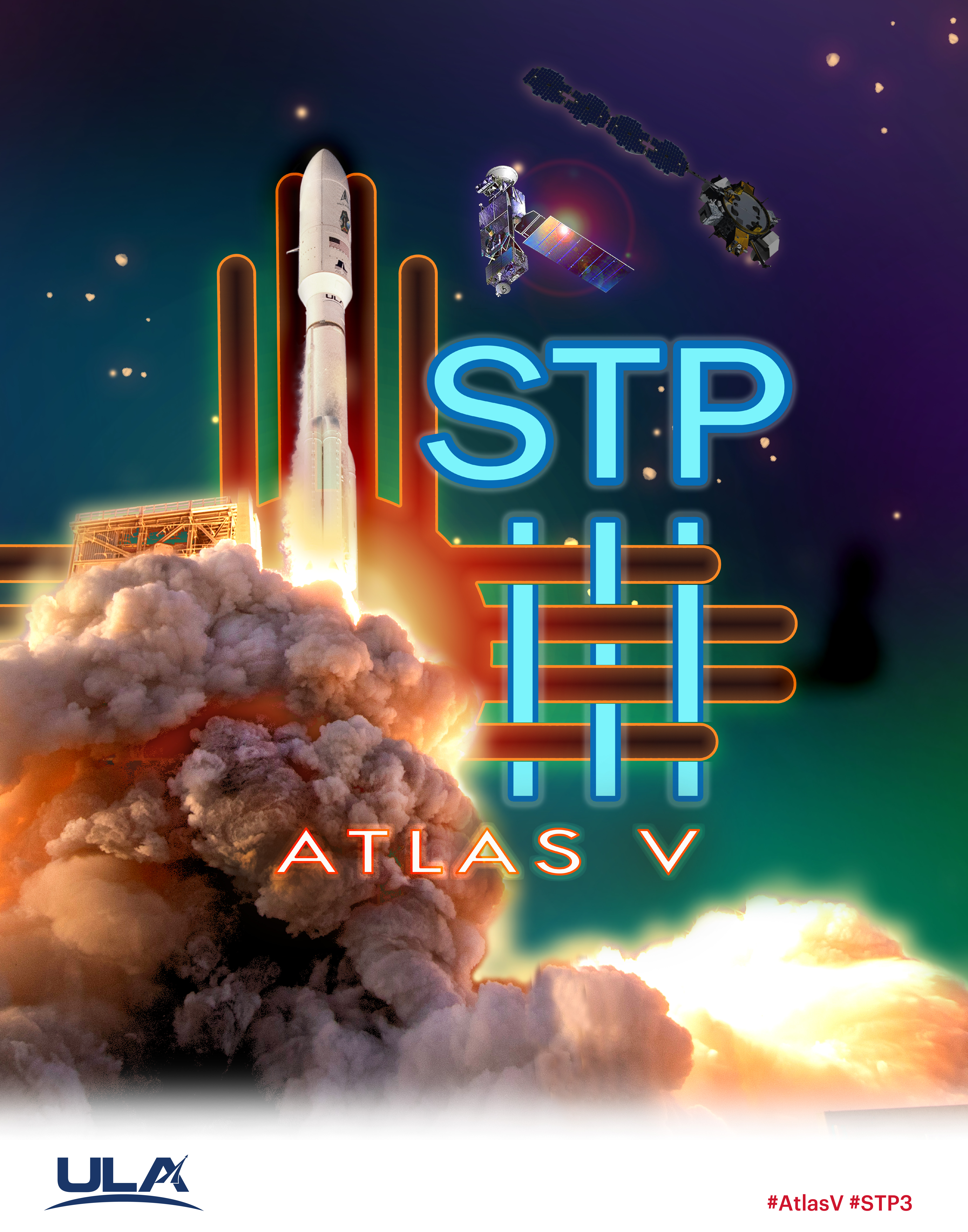Atlas V Launches STP-3
A United Launch Alliance (ULA) Atlas V rocket carrying the Space Test
Program (STP)-3 mission for the U.S. Space Force’s Space Systems Command
lifted off on Dec. 7 at 5:19 a.m. EST from Space Launch Complex-41 at
Cape Canaveral Space Force Station.
Launch Webcast
Live updates
To keep up to speed with updates to the launch countdown, dial the ULA launch hotline at 1-877-852-4321.
Join the conversation at Twitter, Facebook, Instagram and
LinkedIn
#AtlasV #STP3
Mission Overview
A United Launch Alliance (ULA) Atlas V 551 rocket will launch the Space Test Program-3 (STP-3) mission for the U.S. Space Force’s (USSF) Space Systems Command (SSC). STP-3 is a co-manifested mission that matures technology and reduces future space program risk for the Department of the Air Force and the U.S. Space Force by advancing warfighting capabilities in the areas of nuclear detonation detection, space domain awareness (SDA), weather, and communication. Both spacecraft will be delivered
to geosynchronous orbit. Liftoff will occur from Space Launch Complex-41 at Cape Canaveral Space Force Station, Florida.
The primary spacecraft is STP Satellite (STPSat)-6 and the rideshare spacecraft is the Long Duration Propulsive Evolved
Expendable Launch Vehicle (EELV) Secondary Payload Adapter (ESPA) (LDPE) - 1. Both spacecraft were built by Northrop Grumman. The STPSat-6 payloads including the Space and Atmospheric Burst Reporting System 3 (SABRS-3), an operational mission from
the National Nuclear Security Administration, NASA’s Laser Communication Relay Demonstration (LCRD) payload to test technologies for the next generation of data relay satellites, and several Department of Defense Space Experiments Review Board
space weather and situational awareness payloads. LDPE-1 is designed for a 1-3 year mission life and carries experimental payloads. The experiments are intended for rapid risk reduction efforts to inform future programs.
The STP-3 mission debuts three engineering features designed to reduce risk and accumulate flight experience before use on the Vulcan Centaur, these include Out-of-Autoclave (OoA) payload fairings, an in-flight power system and GPS enhanced navigation.
The OoA payload fairing was developed with a new manufacturing method, an alternative process to cure carbon fiber composites, which allows for a more efficient production process, lower cost and lower system mass while maintaining the same
level of reliability and quality.
The Atlas V is also equipped with a new In-Flight Power System (IFPS). This system supplies power to the satellites’ batteries during the rocket’s long duration ascent, a mission more than seven
hours. The IFPS will ensure the spacecraft have fully charged batteries when deployed into geosynchronous orbit.
GPS Enhanced Navigation is an additional first flight item that utilizes existing flight computer hardware to provide GPS signals
that improve the Centaur‘s navigation system performance, allowing the Centaur to achieve even more accurate orbits.
Launch Vehicle
Payload Fairing (PLF)
The spacecraft is encapsulated in a 17.7-ft (5-m) diameter short payload fairing. The 5-m PLF is a sandwich composite structure made with a vented aluminum-honeycomb core and graphite- epoxy face sheets. The bisector (two-piece shell) PLF encapsulates both the Centaur and the satellite. The vehicle’s height with the 5-m short PLF is approximately 196 ft (59.7 m).
Centaur
The Centaur second stage is 10 ft (3 m) in diameter and 41.5 ft (12.6 m) in length. Its propellant tanks are pressure-stabilized and constructed of corrosion-resistant stainless steel. Centaur is a cryogenic vehicle, fueled with liquid hydrogen and liquid oxygen, powered by an RL10C-1 engine producing 22,900 lb (101.9 kilo-Newtons) of thrust. The cryogenic tanks are insulated with a combination of helium-purged blankets, radiation shields and spray-on foam insulation (SOFI). The Centaur forward adapter (CFA) provides structural mountings for the fault-tolerant avionics system and structural and electrical interfaces with the spacecraft.
Booster
The booster is 12.5 ft (3.8 m) in diameter and 106.5 ft (32.5 m) in length. The booster’s tanks are structurally rigid and constructed of isogrid aluminum barrels, spun-formed aluminum domes and intertank skirts. Booster propulsion is provided by the RD-180 engine system (a single engine with two thrust chambers). The RD-180 burns RP-1 (Rocket Propellant-1 or highly purified kerosene) and liquid oxygen and delivers 860,200 lb (3.83 mega-Newtons) of thrust at sea level. Five solid rocket boosters (SRBs) generate the additional power required at liftoff, providing 371,550 lb (1.6 mega-Newtons) of thrust. The Centaur avionics system, provides guidance, flight control and vehicle sequencing functions during the booster and Centaur phases of flight.
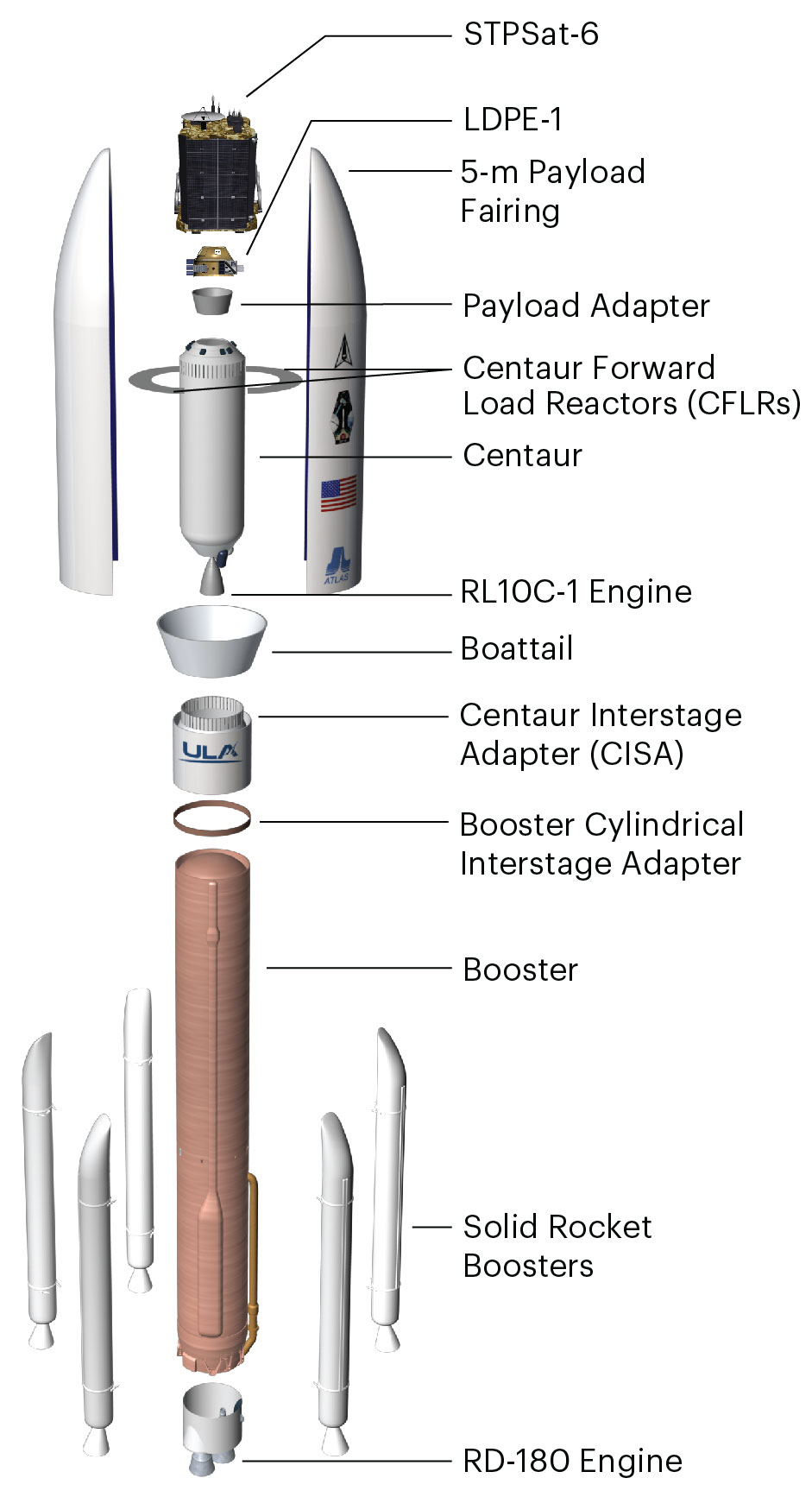
Flight Profile
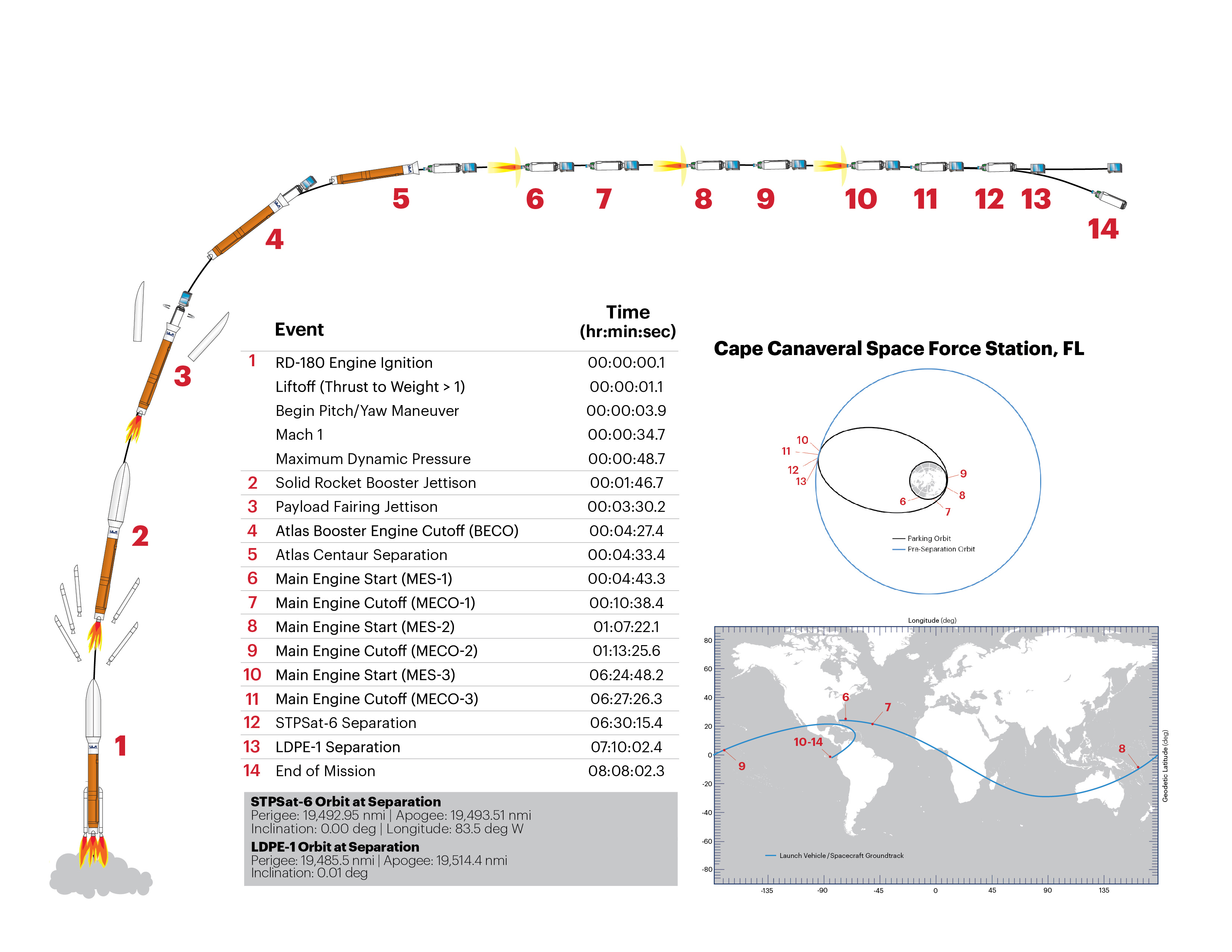
Space Launch Complex-41 // Processing
Space Launch Complex-41, the East Coast home of the Atlas V rocket at Cape Canaveral Space Force Station in Florida, employs a “clean pad” concept of operations to ready launch vehicles and payloads for ascent into space. The rocket elements are assembled atop a Mobile Launch Platform inside the Vertical Integration Facility (VIF) located adjacent to the launch pad. The platform and fully stacked Atlas V then travels by rail approximately 1,800 feet northward from the VIF to the pad for the final countdown, fueling and liftoff. Complex 41 was constructed by the U.S. Air Force in the 1960s for the Titan rocket program. The site was rejuvenated in support of the Atlas V starting in the late 1990s.
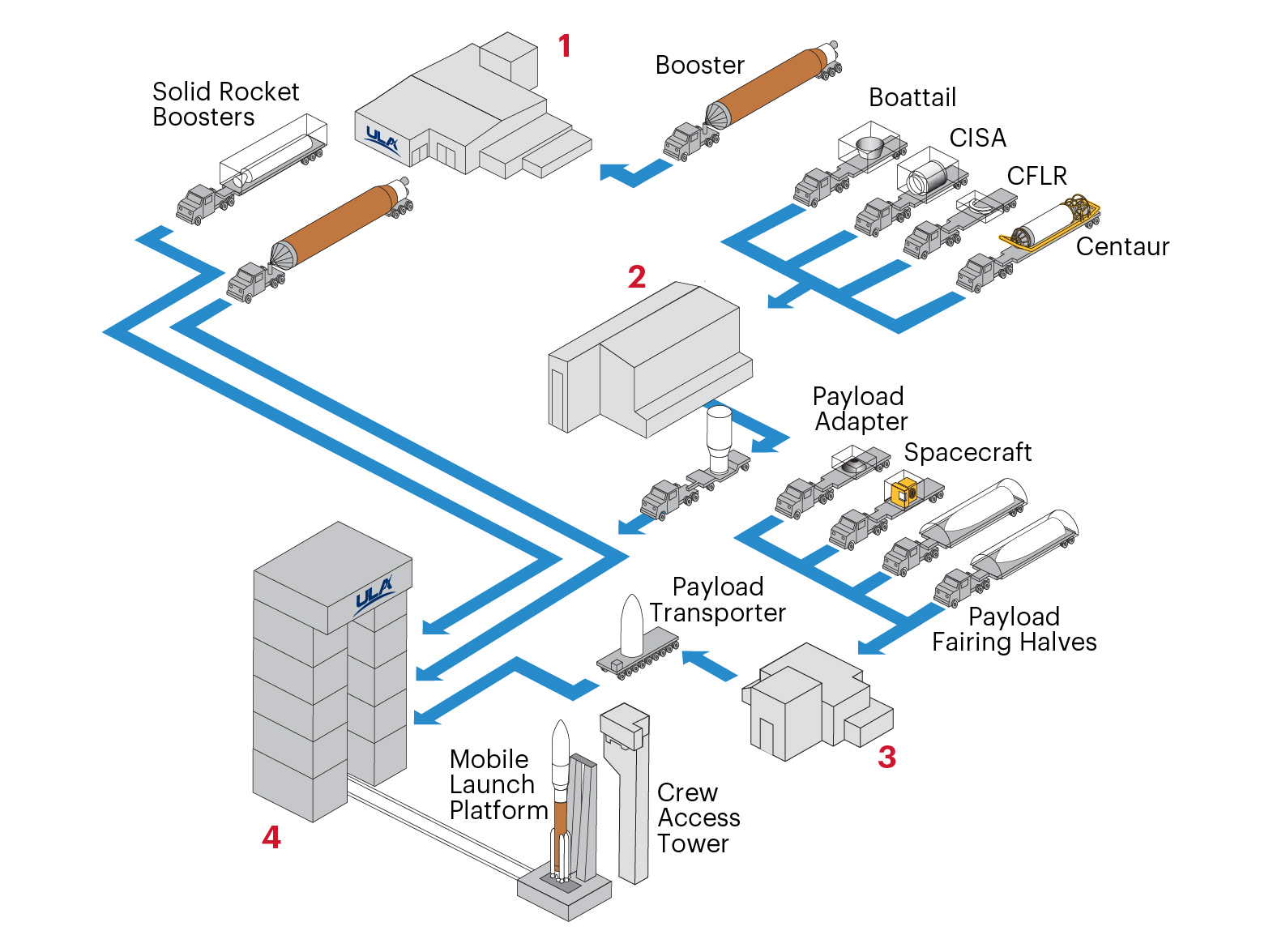
1. Atlas Spaceflight Operations Center (ASOC)
Launch Control Center,
Mission Director's Center,
Mission Support Teams,
Launch Vehicle Horizontal Processing & Ordnance Installation
2. Delta Operations Center
Offline Vertical Integration (OVI):
Interstage Adapters, Centaur,
Boatail, Base Module & Centaur
Forward Load Reactor Deck
3. Spaceflight Processing Facility
Spacecraft Processing,
Testing & Encapsulation
4. Vertical Integration Facility
Launch Vehicle Integration &
Testing, Spacecraft Mate &
Integrated Operations
Production
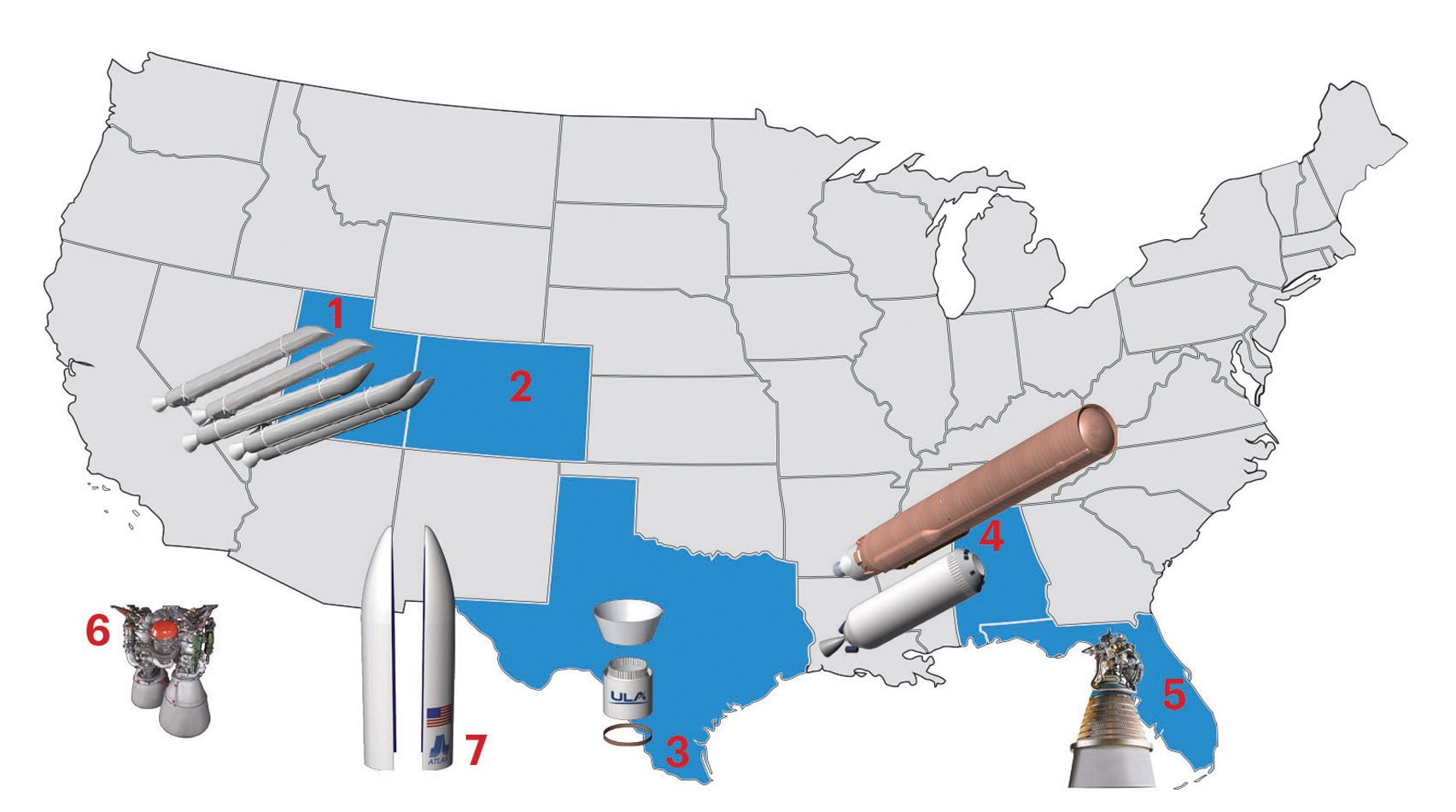
1. Promontory, UT
Solid Rocket Booster Fabrication
at Northrop Grumman
2. Denver, CO
ULA Headquarters &
Design Center Engineering
3. Harlingen, TX
Payload Adapter,
Booster Adapter &
Centaur Adapter Fabrication
4. Decatur, AL
Booster Fabrication & Final Assembly,
Centaur Tank Fabrication & Final Assembly
5. West Palm Beach, FL
RL10C1 Engine Fabrication at
Aerojet Rocketdyne
6. Khimki, Russia
RD180 Engine Fabrication at
NPO Energomash
7. Decatur, AL
5-m Payload Fairing
Fabrication at RUAG Space


